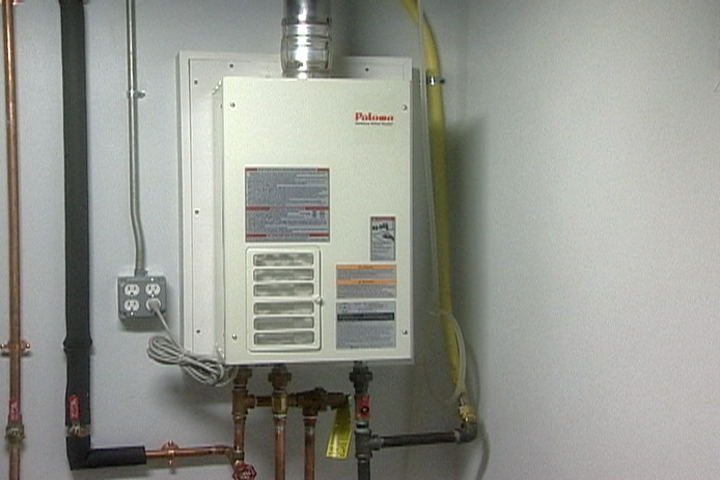Steps on How to Care for Your Home's Hot Water System Effectively
Browse Our SiteThe author is making several great points regarding How to Maintain Your Water Heater & Prolong its Life overall in this content following next.

Warm water is vital for day-to-day comfort, whether it's for a revitalizing shower or washing recipes. To guarantee your warm water system runs effectively and lasts longer, normal maintenance is vital. This post offers practical pointers and insights on exactly how to preserve your home's hot water system to avoid disruptions and pricey fixings.
Introduction
Keeping your home's warm water system may seem challenging, however with a few straightforward steps, you can guarantee it operates efficiently for many years to come. This overview covers everything from recognizing your hot water system to do it yourself upkeep ideas and knowing when to employ professional aid.
Significance of Keeping Your Warm Water System
Routine maintenance not just prolongs the life-span of your warm water system but additionally guarantees it runs effectively. Disregarding maintenance can bring about decreased effectiveness, higher power bills, and even early failure of the system.
Indications Your Warm Water System Needs Upkeep
Understanding when your warm water system needs interest can protect against major concerns. Watch out for indications such as irregular water temperature level, strange noises from the heating unit, or corroded water.
Understanding Your Hot Water System
Before diving right into upkeep jobs, it's useful to comprehend the basic parts of your hot water system. Commonly, this includes the water heater itself, pipelines, anode rods, and temperature level controls.
Regular Monthly Upkeep Tasks
Regular month-to-month checks can aid catch small concerns before they rise.
Purging the Water Heater
Purging your water heater removes debris buildup, enhancing efficiency and prolonging its life.
Checking and Changing Anode Rods
Anode poles stop rust inside the tank. Evaluating and replacing them when worn is essential.
Examining and Changing Temperature Settings
Adjusting the temperature level settings guarantees optimal performance and safety and security.
Do It Yourself Tips for Upkeep
You can do a number of maintenance jobs yourself to keep your warm water system in leading problem.
Looking for Leaks
Routinely examine pipelines and links for leaks, as these can lead to water damages and greater expenses.
Checking Pressure Relief Valves
Testing the pressure safety valve ensures it functions appropriately and protects against too much stress accumulation.
Insulating Pipelines
Insulating warm water pipelines decreases warm loss and can save power.
When to Call an Expert
While DIY maintenance is useful, some issues require specialist experience.
Complicated Issues Requiring Specialist Assistance
Examples consist of major leaks, electric issues, or if your water heater is consistently underperforming.
Routine Expert Maintenance Perks
Expert maintenance can include thorough examinations, tune-ups, and making sure compliance with safety and security requirements.
Conclusion
Normal maintenance of your home's warm water system is vital for effectiveness, longevity, and expense financial savings. By following these ideas and knowing when to seek specialist assistance, you can make certain a reputable supply of warm water without unexpected interruptions.
How to Maintain an Instant Hot Water Heater
Before tinkering with your hot water heater, make sure that it’s not powered on. You also have to turn off the main circuit breaker and shut off the main gas line to prevent accidents. Also turn off the water valves connected to your unit to prevent water from flowing into and out of the appliance. 2. When you’re done, you have to detach the purge valves’ caps. These look like the letter “T†and are situated on either side of the water valves. Doing so will release any pressure that has accumulated inside the valves while at the same time avoid hot water from shooting out and burning your skin. 3. When the purge valves’ caps are removed, you have to connect your hosing lines to the valves. Your unit should have come with three hoses but if it didn’t, you can purchase these things from any hardware or home repair shops. You can also get them from retail stores that sell water heating systems. Read the user’s manual and follow it to complete this task properly. When the hosing lines are connected, open the purge port’s valves. 4. You should never use harsh chemical cleaners or solutions when cleaning your unit. Make use of white vinegar instead. It should be undiluted and you’ll probably use about 2 gallons. 5. Now flush your water heater. This task should probably take about 40 minutes. We can’t give you specific directions for this because the procedure is carried out depending on the type, model and brand of your heater. With that being said, refer to the user’s manual. 6. When you’re done draining the unit, you have to turn off the purge port valves again. Remove the hosing lines that you earlier installed on each of the water valves. Put the valve caps (purge port) back in their respective places and be very careful so as not to damage the rubber discs that are found inside these caps. 7. Now that everything’s back in place, check your user’s manual again to find out how to reactivate your water heating system. 8. Once it is working, turn one of your hot water faucets on just to let air pass through the heater’s water supply pipes. Leave the tap on until water flows smoothly out of it. https://www.orrplumbing.com/blog/2014/september/how-to-maintain-an-instant-hot-water-heater/

I discovered that review on Tips For Maintaining Your Hot Water Heater while surfing the search engines. For those who appreciated our blog entry if you please remember to share it. We value your readership.
Request Appointment